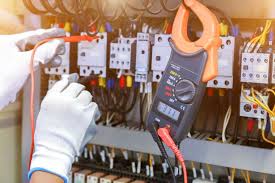Generators are vital to our society, and they play a big role in powering homes and businesses. However, sometimes problems arise with generators that can impact the running of your generator. If you’re experiencing generator issues, it would be helpful to have a guide on hand to help fix them. This guide will cover the basics of generator repair—from identifying the issues to fixing them. I strongly suggest you to visit Long Island Emergency Power to learn more about this.
strongly suggest you to visit Long Island Emergency Power to learn more about this.
The first thing you should do when finding a generator repair service is to ask what kind of issues can be repaired. If the generator has been vandalized, this will likely be one of the first things they check for. Another common issue is a blown fuse, which can usually be fixed with a little bit of wire-tapping and a wiggle.
If you don’t have any other options, here are some tips on how to get help fixing your generator:
1. Go online or call a local power company and ask them to send someone out to your house to fix your generator. This could save you time and money in the long run.
2. Bring your old generator over to their shop and show them the problems that are causing it not to work properly. They may be able to find a solution for you that isn’t too expensive or difficult.
3. Give them a call and see if they can come out and fix your machine without having to go through your home . This could save you from having to go into an unpleasant environment and also give you some peace of mind in case something goes wrong while they’re working on it.
If the voltage on your generator is not correct, you may need to fix it. Check the generator’s voltage by checking its reading on a voltmeter. If the reading is below nominal values, the generator may be faulty and needs to be replaced.
If the reading is above nominal values, the Generator may be in good condition and just needs some minor repairs. Repairing this part of the machine can save you money in the long run.
In addition to checking its voltage, another thing you should do when troubleshooting your generator is checking its circuitry. This means checking for any potential issues with how power is being delivered to or from the generator, as well as with any electronic components within it. If there are any problems, these could lead to decreased performance or even a loss of life if not fixed soon.
When fixing a Generator that doesn’t have an outlet, make sure to connect it properly so that power reaches both ends of the cord (the positive and negative terminals). Doing so will ensure that your Generator starts up correctly and runs smoothly throughout your trip. Additionally, making sure all electrical cords are properly routed can help avoid potential problems during travel – for example, if one cord gets tangled up in something or becomes kinked during transport, that cord might not work properly when you get home)
Before beginning repairs on your Generator, be sure to check for possible defects first! These could include incorrect wiring or connectors within the unit itself (which could lead to fire or other damage), non-functional electrics either inside or outside of your unit (which could affect how quickly your Generator starts up or how often it runs), or even corrupted files inside of your unit (which could prevent it from starting at all).
If there are any problems with yourgenerator, take it apart and look for issues with its electrical wiring or circuitry. If you find any repairs necessary, you’ll need to follow through with them so that your machine runs safely again.
If a generator is running issues, it’s important to check its voltage, circuitry, and outlet for defects. If anything is not working right, it can be fixed safely with some simple steps. In the end, ensuring that your generators are running safely is an essential part of business.
——————————————
